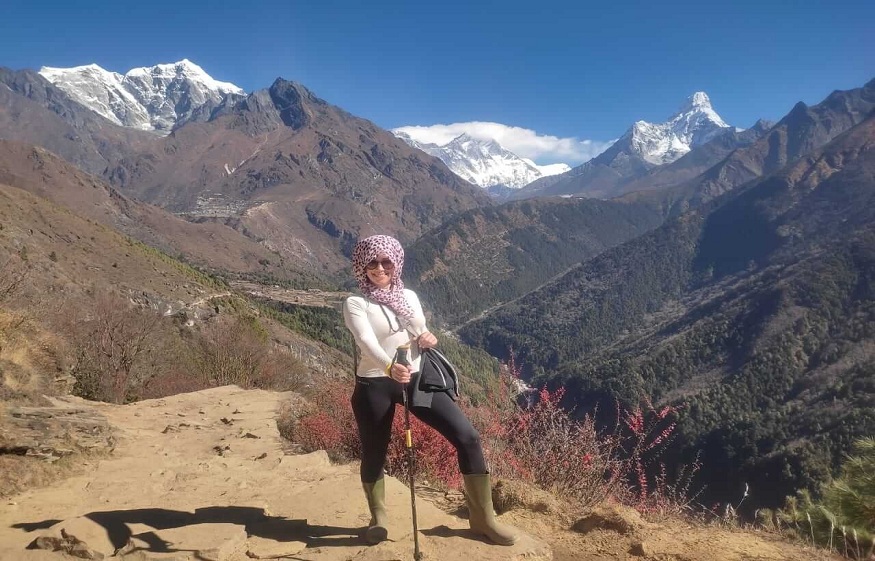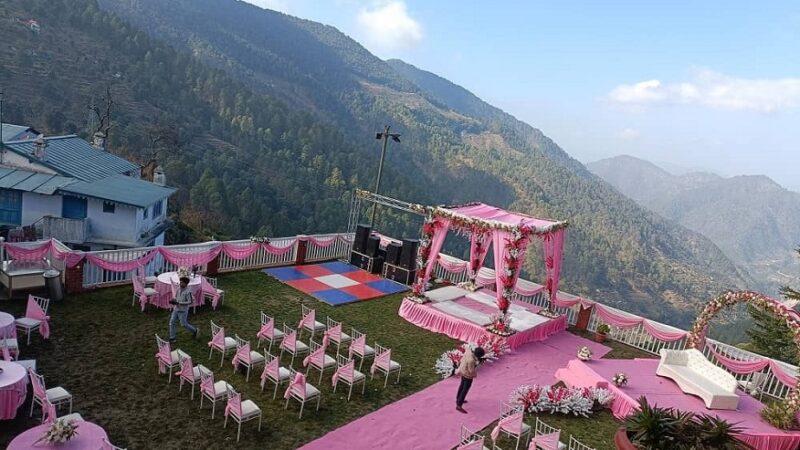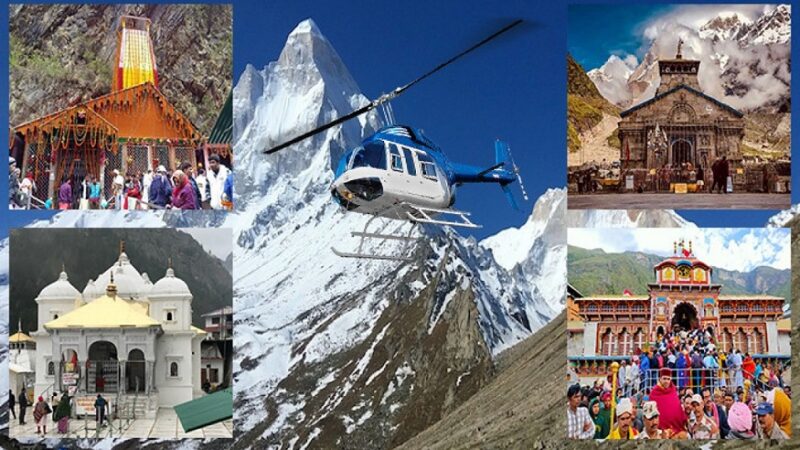Reflections On The Ultimate Trekking Experience

Himalayan Base Camp Trek is the epitome of trekking, and it’s not hard to understand why. It is a journey that tests the body, mind, and spirit in a way very few other adventures can. You eagerly lace up your boots and start on your way up, excitement increasing with every step. With each step, it gets closer — the base of the world’s most magnificent mountain, Mt. Everest, the highest peak in the Himalayan range and the tallest in the entire world. You then wind your way up through villages like Phakding, Namche Bazaar, and Tengboche, where each stop is not only a stunning vantage point but also a chance to explore the Sherpa way of life. You will also see prayer flags blowing in the wind along the route, pass by the Buddhist monasteries, and meet one of the friendliest people on earth, the Sherpa people. The high-altitude environment is otherworldly — snow-capped summits, glaciers, and rugged trails that just feel endless.
There’s no getting around it — the hike is a physical challenge. The altitude just makes every step a little bit harder, and the long days of trekking are tiring. But these are the obstacles that make hitting Everest Base Camp so damn rewarding. And when you finally stand at the foot of Mount Everest, surrounded by other mountains and glaciers, the feeling of achievement is indescribable. This wasn’t simply about overcoming the mountain; this was about overcoming oneself. The journey is about learning to wait, endure, and withstand slowing down while savoring the moment. It is an incredible tribute to the wondrous and subtle forces of nature, the human spirit, and the connections we make along the way.
Introduction: It Begins With a Journey
The trek to EBC started with a hopeful excitement. For many trekkers, this is the product of months, or even years, of planning and longing to be at the foot of the highest mountain in the world. The trek officially begins with a flight from Kathmandu to Lukla, a small town in the mountains, high in the Khumbu region, with a short, dramatic runway. From Lukla, the real adventure starts: to walk through hundreds of lovely villages and the rough terrains of the wildlife of the Everest region.
We take the first few days to acclimate to the high-altitude environment and to soak in the views of the surrounding peaks. Led by a network of well-traveled paths, trekking also winds through lush forests, across swinging suspension bridges, and past centuries-old Sherpa villages. As the scenery slowly turns, with the magnificence of Everest and its neighboring peaks slowly being unveiled, the air is filled with a feeling of adventure and wonder.
The physical exertion begins to take its toll as trekkers make their way up however, the astounding vistas and shared experience of the camaraderie between fellow trekkers continue to motivate as everyone focuses on the final destination of trekkers: Everest Base Camp. It’s a journey, not a destination, and that journey is about experiences and challenges and the beauty along the way.
The Beauty of the Landscape
The scenery on the Everest Base camps is positively mesmerising. Trekkers walk through the Khumbu region and are welcomed to some of the most breathtaking natural beauty on earth. The variety of the landscape is quite amazing, from the thick, green forests of the base to the barren slopes swept clean of trees further up.
Shortly, we’ll reach the rhododendron forest, where the trail descends to pine, rhododendron, and juniper tree forests for most of the trek, with the soothing tune of the Dudh Koshi down below. Trekking upward brings dramatic changes in the landscape. The forest becomes thinner as the alpine pastures ever so gradually become more visible, and the distant mountain peaks covered with snow rise to the sky. The first unobstructed look at Mount Everest itself is a moment that many trekkers remember for the rest of their lives — the mountain’s steep, jagged summit shimmering in the sunshine.
Several stunning views greet trekkers during the journey, particularly from destinations like Namche Bazaar, Tengboche, and Kala Patthar, where wide panoramas of the Himalayas appear. The stark contrast between the snow-covered mountains and glacial rivers, together with the brightly colored prayer flags and ancient monasteries, leaves you in awe and with a feeling of respect. Whether the morning light on Everest, the peaceful tranquillity of a Himalayan valley, or just the scale of the surrounding mountains, the landscape beauty is always there as you trek to Base Camp.
Just a scratch: The physical and emotional scars of LPTs
The Ultimate Achievement: Trekking to Everest Base Camp is a journey of body and mind. It is a physically challenging trek due to the altitude, steep climbs, and the length of time spent trekking. Hiking at high altitudes, which have less oxygen, can cause fatigue and shortness of breath, making every step a little more difficult than it would be at sea level. The perception is the same pace as there are a good 20 or 30 porters; however, the military march-like effort does not let up, and even with the frequent rests, the body begins to suffer as trekkers work their way up to the higher elevations.
Everest Base Camp trek cost But the physical hardships aren’t the only obstacles on the trip. It is also about the mental strength to concentrate and stay positive. While the days are long, the weather can be, at times, unpredictable, and the fatigue from long treks can affect trekkers, too. The thin air and long stretches of hiking can be oppressive at times. But the amazing views, the satisfaction of every single step and the encouragement of others on the treks, and the porters can all help get you through the hardest times.
Acclimation, necessary to protect against altitude sickness, also fulfils an important role in dealing with the physical rigours. Refamiliarize yourself with the altitude trekking floss of how slowly trekkers take it, carefully plotting rest days in places like Namche Bazaar, so the body can get used to the new elevation. Mental strength — being able to keep going and embrace the challenge, and take in the journey — is frequently the difference maker.
Bonding with Fellow Trekkers
One of the nicest and most surprising (for me at least) things about the trek to Everest Base Camp is the camaraderie that quickly forms between trekkers. Although the physical and mental demands are severe, the forced closure of the ranks also provides a rare opportunity for camaraderie. TREKKER UNITY All nationalities of trekkers can converge as one, around a single objective – to reach Everest Base Camp! The mixture of shared experiences of trekking in the Himalayas creates a feeling of friendship, support, and respect.
Stories, experience, and encouragement are shared as trekkers themselves traverse the challenging trails. The days are long, the views can be tough, but it is a powerful sense of community that weaves itself together off the trails. There are times of laughter as trekkers share tips, assist one another through difficult terrain, and toast small victories — reaching the next village, perhaps, or getting a view of the peak of Everest. Even at times of tiredness or questioning, the company of fellow trekkers is comforting and spurs you along.
Trek To Base Camp Mount Everest After long days of trekking, camaraderie grows in the teahouses and lodges during the evenings. All sit around a warm stove, eating and talking over the day’s journey. They are these flashes of shared connective moments, reminding us that the pilgrimage is a personal one but that it’s also a communal one. The friendships made on such adventures often endure long after trekkers return home.
The Role of Guides and Porters
The guides and porters are key to the success and safety of the Everest Base Camp trek. To the trekkers, they are not just helpers — they are precious company, offering expertise, knowledge, and cultural insights. The guide’s job extends well beyond just leading out on the trail. Expert guides share valuable knowledge about the landscape, the culture of the region, and the climate, and can spot early signs of altitude sickness, looking after the health of the hikers.
Porters, meanwhile, lug most of the heavy gear, enabling trekkers to concentrate on the journey. This is particularly critical when it comes to high-altitude trekking in the mountains, where that 1 or so ounce will count. Backpacks, sleeping bags, and other gear are carried by porters, who help lighten the load for trekkers and are essential to the team that ensures the trek runs as planned. They are strong and durable and are capable of climbing the difficult, hazardous terrain with ease.
Benefits of guides and porters: Guides and porters add an element of Safety, comfort, and cultural experience to your trekking adventure. This knowledge and local connections to the culture and landscape, as well as intimacy with the trek’s logistical challenges, add a layer of authenticity to the experience, and their sheer presence keeps trekkers on the right path, both literally and figuratively. The trip to EBC without these experienced professionals would be much harder and less rewarding!
Trailside Cultural Encounters
Everest Base Camp Trek One of the most exciting and rewarding parts of the Everest Base Camp (EBC) trek is the exposure to the highly energized Sherpa culture. Trekkers, while moving along the route through the Khumbu region, pass through traditional Sherpa villages, rich in culture, hospitality, and spirituality. More than just rest stops, villages such as Namche Bazaar, Tengboche, and Dingboche offer a snapshot of an existence that hasn’t changed much over the past few centuries. The Sherpas, who revere the mountains, allow visitors into their world, relating stories, customs, and rituals passed down through generations. At Tengboche Monastery, trekkers find themselves amid Buddhist prayer ceremonies, as the sound of chanting monks and the flicker of prayer flags add a spiritual dimension to their journey. On the way, trekkers will not be just amazed by the wondrous landscape, but the warmth and openness of the Sherpa People. Whether it’s taking tea in a teahouse or simply smiling at a villager, the cultural exchange while on the EBC trek makes the trip feel intimate, personal, and life-altering. These encounters with the Sherpas form a link between the traveler and the country, adding layers to the trek that transcend the physical.
Expect to be Alone with Your Thoughts
By the time trekkers are walking up to Everest Base Camp, personal moments of quietude and contemplation are par for the course. The immense open space of the Himalayas and the sheer remoteness of the trail offer plenty of time to think. Travelling by foot, alone among some of the most snow-covered peaks and vast terrains, trekkers often find the space to reflect on their journey and the landscape both physically and emotionally. The walk to EBC is not about getting to a destination, it’s about immersing in nature and oneself. In the quiet of the mountains, thoughts slow, and the beauty of the land is so spectacular it could only make one reflect. Numerous trekkers have told me that they feel both humbled and grateful walking through this awesome landscape with no other sound than their steps and the wind in the trees. In that solitude there can be time for reflection and much can be gained through that experience, for having experienced an adventure at the level that only the JMT can bring.“-Jeremy,/Yosemite Medic posted in his blog These private moments are perfect for meditating on the meaning of the trek, both as an achievement and as part of life in such a sacred and awe inspiring place.” With such an overwhelming sight of nature’s wonders, trekkers are humbled by the littleness of their problems in the world, and a euphoria washes over them. For most, these silent times are by far the most treasured moments of the trek, and a lasting bond is formed with the mountains and with oneself.
Conquering Doubts And Limits
The Everest Base Camp trek is not for the faint of heart; it will test you in every way possible, and sometimes you have moments of doubt. Ascending day by day on that relentless climb, with the air growing thin and the terrain grueling, the trek is punishing, and it’s not unusual to ask if the goal is even attainable. High-altitude exposure, with lowered oxygen levels, can cause fatigue, headaches, and a continual feeling of effort, even among the fittest of trekkers. There are times when making it to Base Camp might seem impossible, especially as the trail gets steeper and the altitude higher. But that doubt is what makes it so rewarding. As the trek goes on, lots of trekkers gain strength in themselves through the pain and exhaustion. The slow speed combined with acclimatization days ensures hikers the opportunity to acclimatize to the altitude and feel empowered to adapt to the harsh environment. Along the way, trekkers find reserves of strength they did not realize they had. The feeling of achievement after completing Base Camp is a lot more than just overcoming physical hurdles, it’s about overcoming self-doubt and personal thresholds. And so the journey serves as a metaphor for life itself, demonstrating that sheer will and mental strength can push the impossible to the edge.
The Final Push to the Summit
The last stretch of the Everest Base Camp Treks is the most exciting and emotional. Till now, it has been a gentle, gradual ascent with no steep climb, but as you climb up ridge by ridge, you know you are closing in on the culmination. Base Camp The last leg to Base Camp is strenuous now that the air is thin, temperatures are cold, and the terrain is rough. The trekkers, however, are heartened by the view of Everest’s soaring peak in the background, and it keeps them moving. On this stage of the hike, you are all tired from a few long days walking, but your driving force is to get to the world-famous Base Camp. Each footfall is heavier, but the vision of standing a stone’s throw from the world’s tallest mountain has trekkers striving to continue. Approaching Base Camp, the sight of glaciers, icefalls, and the surrounding peaks is even more stunning, and the feeling of achievement is euphoric. The summit of this trek, though not the summit of Everest, feels like my own personal victory. The push to the end is overcoming not only the raw human struggle to reach the camp, but the emotional journey that trekkers make to arrive: battling through physical exhaustion, mental fatigue, and a battle with oneself. The thrill of reaching the stony platform that is Everest Base Camp is a sense of achievement, the result of days of hard work and endurance, one that will stay with trekkers forever.
Life After the Trek: What Remains
Indeed, the lessons learned on the Everest Base Camp trek are usually the ones that trekkers carry home with them for the rest of their lives. The journey was more than just a hike, but more of an experience that the body and mind remember. To EBC trekkers, life after the trek is an intense sense of achievement and realization about their capabilities. A very high level of physical endurance and the difficulty of high-alpine trekking implants enormous self-confidence. In the months after the trip, trekkers often tap into the mental strength and mind games they have encountered in the field to add purpose and wellness to their daily lives. And the emotional and spiritual effects of the trek remain: The guys still miss the Jukebox. Those moments of hush as you contemplate beside sparkling Everest base camp, the cultural immersion of meeting the Sherpa people, and the vistas that sear your soul. A common account of those who have finished the journey is of a weight lifted from their shoulders, as if the mountains’ simplicity and vastness have re-aligned their sense of what is important. The physical trek before arriving at Base Camp, the early and late hectic days in Base Camp, the accomplishments and the hardships, this adventure sparks as much personal growth as it is filled with images of the epic landscape and the Sherpa people that remain for months and years on end. The post Everest Base Camp trek is more than just a homecoming – it is life lessons learnt, strength gained, and memories created that will sustain and mould one’s life.
How do you describe a trekking experience?
Mount Everest base camp Trek Trekking is usually defined as walking for days or more on challenging terrain, and engaging all the senses and body. It’s about walking across nature, often at altitude, across paths that can range from established paths to less-used and challenging routes. Trekking is not just about physical fitness —it’s also about immersing yourself in the surrounding nature, which can aid self-reflection and gratitude towards the natural world. The journey is a multiday affair that progresses in stages, with daily challenges faced and enjoyed anew each day. We discover new rewards by the step, whether it be an issue through thick undergrowth, mountain passes, or rivers for which there are no bridges. It’s also a time for growing yourself. It requires courage and tenacity – but also permits intrepid friends to bond intimately with one another and the breathtaking surrounds, while providing empyreal solitude and contemplation. The spectacular vistas of snow-covered peaks, valleys, and forests are a moving sight, and the encounters with local cultures ― whether it’s a shared cup of tea with a fellow trekker or an insight into the customs of native communities ― give depth and meaning to a sojourn. And in the end, trekking is never just about making it to the destination; it’s about the lessons the journey holds and the satisfaction of having conquered physical and mental trials.
What did I learned from trekking?
On the other hand, trekking is an enlightening experience that teaches you not just about the outside world but also about the inside world. One of the deepest lessons is to do with patience. “What trekking does is it all slows down,” says Ferdinando Doyle, a 30-year trekking guide who introduced Rush’s compass stone and his reasoning for it to me in the first place. It’s teaching resilience, the ability to push through tough times — whether that’s also pushing up a steep slope, living through the discomfort of high altitude, or dealing with shifting weather conditions. And yes, trekking heightens one’s respect for the potency and frailty of nature. Trekking in remote, unspoiled territory provides an immediate sense of the beauty and difficulty that local people face living in that region. It also emphasizes the importance of sustainability and conservation. Trekking also promotes humility and thankfulness. With the vastness of mountains surrounding us or the simplicity of life in isolated villages, one cannot help but think about the connection between people and nature. What’s more, trekking fosters camaraderie, since trekkers frequently unite over common challenges and a common goal. The struggles, the physical demand, and the successes forge lasting bonds. In the end, trekking is more than just a physical challenge; it’s confronting the discomfort and generating internal strength and connection to the world around you.
What are inspirational quotes on trekking?
Trekking has been an inspiration to so many people, with so many of them undergoing a life-changing experience after thoroughly articulating their deep-seated motivations. Quotes about hiking/ trekking say everything about the hardships, beauty, and personal enrichment that trekking can bring your way. We like the sentiment often sold on T-shirts with the quote of the famous mountaineer Sir Edmund Hillary: “It is not the mountain we conquer, but ourselves.” “that to climb a mountain it is not necessary to get to the top” “all that matters is the mountain” That includes so much of the magic of trekking – that you don’t just get to the top of the mountain but that you conquer the internal struggles and that you push your body further that you thought you could go. One more brilliant quote highlanders can relate to is, “The journey of a thousand miles begins with a single step”, an age-old wisdom of Lao Tzu. It denotes that one can even accomplish the most difficult journey, one step at a time, and encourages trekkers to make their first step, no matter how difficult it may seem. Another memorable one comes from George Mallory, the British mountaineer: “Because it’s there.” This straightforward yet deeply emotional answer to why go to Everest reflects the same psych and passion that drives many trekkers and hikers to their mountains: To test ourselves, to conquer our fears, and to feel the spirit. Quotes about trekking, such as these, are little pieces of reminders that remind us about the mental and emotional part of the journey. They push trekkers to keep trudging on when the going gets tough, to value the here and now, and to understand great rewards are reaped not only at the destination but while traversing the entire journey.
What Exactly is the Assignment of Trekking?
Everest Base Camp Trekking refers to a long, adventurous journey undertaken on foot in areas where common means of transport (such as vehicles or machines) are generally not available. It is a popular form of outdoor recreation. It is unlike regular hiking due to trekkers’ higher altitude, long journey, and more challenging terrain. Trekkers can traverse marked routes or venture into a remote wilderness in search of the road less travelled. Trekking itself as an activity roots from the very nature it connects everyone to, and quite literally could end up in some of the most beautiful, scenic, and awe-inspiring places on the planet. Trekking is just as much a physical challenge as a spiritual and fulfilling journey. It’s something you can do in countless places–the remote Himalayas, the tranquil Andes, or the wide open plains of Africa. Most treks are multi-day excursions, and trekkers will be required to either camp or stay in lodges as they walk. Different from all these is trekking, which involves complete immersion in nature and culture, also where trekkers have the chance to talk and meet with locals, learn about the indigenous about their culture and environment, while on trek. Trekking encourages self-development, pushing one’s stamina to the limit and offering chances for introspection and self-discovery. It’s an undertaking that requires physical fitness, mental fortitude, and a desire to explore, providing an unparalleled bounty of rewards to those who voyage. From the adrenaline rush, to the closeness to nature, to the sense of accomplishment, trekking remains unforgettable for people, Long after the travel has stopped.






